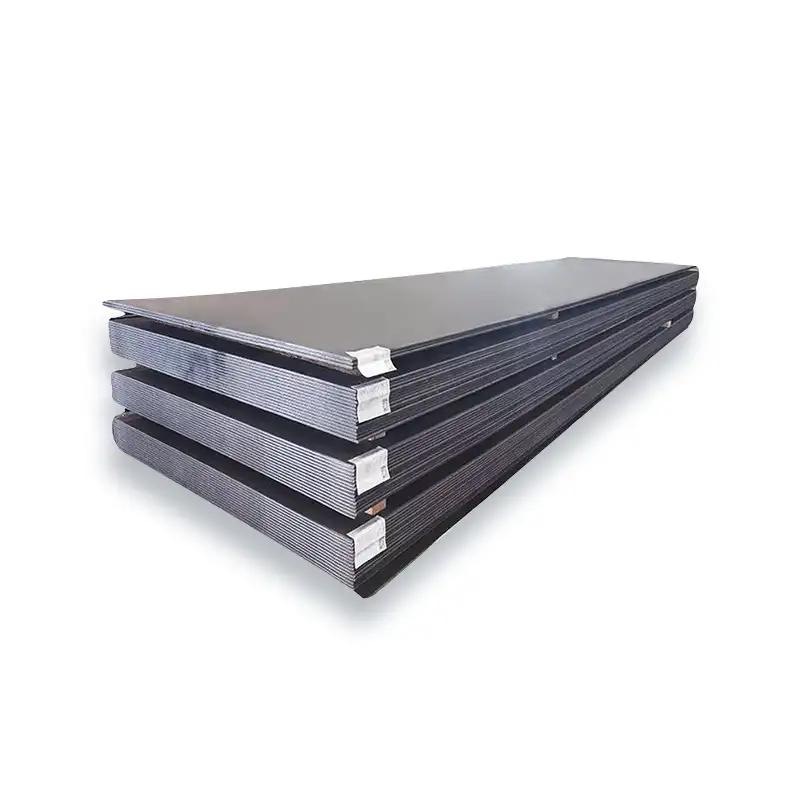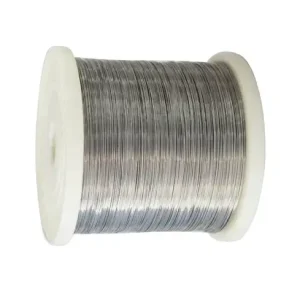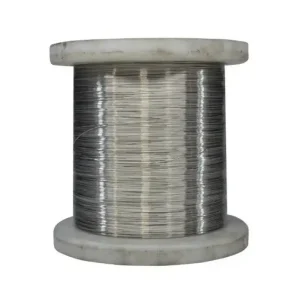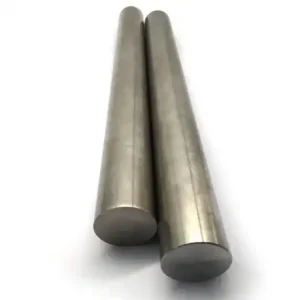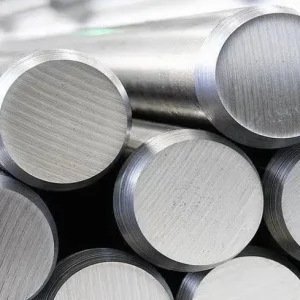ASTM A285 plate is a cost-effective family of low- to intermediate-tensile carbon steel plates intended for fusion-welded pressure-vessel work; Grade C provides the highest strength and is the most widely used, Grade A gives the best formability with the lowest carbon limit, and Grade B sits between them. When selected correctly — matching grade, thickness, and heat-treatment or welding practice to service conditions — A285 plate gives reliable performance for boilers, storage tanks, heat exchangers, and similar welded pressure equipment.
What this specification covers
ASTM A285 is a Standard Specification for pressure-vessel plates of carbon steel produced for low- and intermediate-tensile strength service. Plates are intended for fusion-welded pressure vessels and are normally supplied in the as-rolled condition; the standard sets maximum thickness limits (commonly 50 mm / 2 in.) and defines chemical and mechanical limits for three grades labeled A, B, and C. Use of killed, semi-killed, capped, or rimmed steel is allowed at the manufacturer’s option. This specification is meant to help designers choose economical plate for welded vessels where high fracture toughness at very low temperatures is not the primary requirement.
Grade differences: A, B, C
-
Grade A: lowest carbon maximum, best ductility and formability. Suitable where forming or cold bending is important or where weldability margin is prioritized.
-
Grade B: intermediate carbon ceiling; often chosen where slightly higher strength is needed without moving to Grade C.
-
Grade C: highest carbon maximum and resulting higher tensile/yield strengths; common for pressure vessel shells and heads where strength and economy are the controlling factors.
Selection depends on welding procedure, heat input control, and required post-weld properties. For critical low-temperature service or where fracture toughness governs design, higher-toughness alternatives (for example ASTM A516 grades) are usually preferred.
Manufacturing and supply practice
Manufacturers may supply plates made by killed, semi-killed, capped, or rimmed processes. Killed steels tend to show the most uniform properties through thickness and are commonly requested for critical vessel work. For plate thicker than typical limits, or when vessel codes require specific impact energy or toughness values, designers usually specify other grades or additional tests. Plate is normally supplied in the as-rolled condition unless the purchaser requires controlled heat treatment or additional testing.
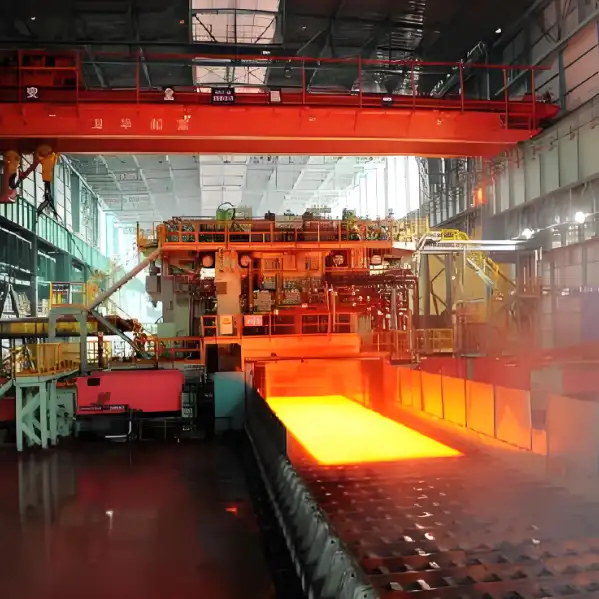
Chemical composition
Below is a practical composition table drawn from the ASTM A285 limits commonly used by suppliers. Values represent maximums or typical maximum percentages by weight from heat analysis unless otherwise noted.
| Element | Grade A (max) | Grade B (max) | Grade C (max) | Notes |
|---|---|---|---|---|
| Carbon (C) | 0.17% | 0.22% | 0.28% | higher C → higher strength, lower weldability margin. |
| Manganese (Mn) | 0.90% | 0.90% | 0.90% | control for hardenability |
| Phosphorus (P) | 0.025% (max) | 0.025% | 0.025% | low P minimizes embrittlement risk |
| Sulfur (S) | 0.025% (max) | 0.025% | 0.025% | low S improves weldability and ductility |
| Silicon (Si) | typical ≤0.35% | typical ≤0.35% | typical ≤0.35% | often controlled for deoxidation and mechanical properties |
Notes on table: suppliers sometimes publish slightly different wording, but the carbon and manganese ceilings plus low P and S limits are stable across recognized A285 datasheets. Where exact trace limits are critical for approval, always request the mill heat certificate.
Mechanical and physical properties
The mechanical properties depend on grade and mill practice. Below are representative values commonly used for design and procurement checks; verify with mill certificates for bid evaluation.
| Property | Grade A (typical) | Grade B (typical) | Grade C (typical) | Units / Notes |
|---|---|---|---|---|
| Tensile strength (UTS) | ~380 MPa (55 ksi) | ~410 MPa (60 ksi) | ~485 MPa (70–75 ksi) | supplier tables show rising UTS with grade |
| Yield strength (0.2% offset) | ~190 MPa (27 ksi) | ~205 MPa (30 ksi) | ~275 MPa (40 ksi) | design values must come from mill tests |
| Elongation (in 2 in) | ~34% | ~28–32% | ~20–25% | elongation decreases with higher strength |
| Brinell hardness | ~110 HB | ~120 HB | ~170 HB | hardness gives quick weldability cue |
| Modulus of Elasticity | 190 GPa | 190 GPa | 190 GPa | typical for carbon steels |
Engineering note: fatigue, fracture toughness, and impact energy are not fully covered by the basic A285 table. If design calls for guaranteed toughness at low temperature, specify required Charpy V-notch values or select a plate grade that includes toughness testing in its spec.
Specification checklist
When ordering A285 plate include the following to avoid disputes:
-
ASTM standard number and year (ASTM A285).
-
Grade (A, B, or C).
-
Plate thickness range and flatness tolerance.
-
Required tests: tensile, chemical analysis (heat & product), hardness, nondestructive testing if needed.
-
Mill test report (MTR) requirement and traceability.
-
Surface finish, cutting and edge treatment, and allowable mill scale.
-
Delivery condition (as-rolled or normalized if required).
-
Any welding or fabrication certification expectations.
This prevents surprises and makes quality control simple during inspection and acceptance.
Welding, forming, and fabrication notes
-
Weldability: A285 grades have good general weldability for common consumables, provided preheat and interpass controls match carbon equivalent and thickness. Grade A, with lower carbon, gives the most forgiving weld behaviour. Grade C may need more careful preheat or controlled cooling on thick sections. Always calculate carbon equivalent (CE) for the specific chemistry and thickness; where CE is high, follow qualified procedure specifications and consider low-hydrogen consumables.
-
Forming: Grade A is preferable when significant cold forming is required. Grade C offers less ductility and greater springback.
-
Post-weld heat treatment (PWHT): Not typically required by the A285 standard; however, vessel codes or service conditions may mandate PWHT to temper weld zones or reduce residual stresses.
-
Impact toughness: If vessel service involves low temperatures, specify Charpy V-notch tests and minimum absorbed energy; otherwise the standard mechanical test set may be insufficient.
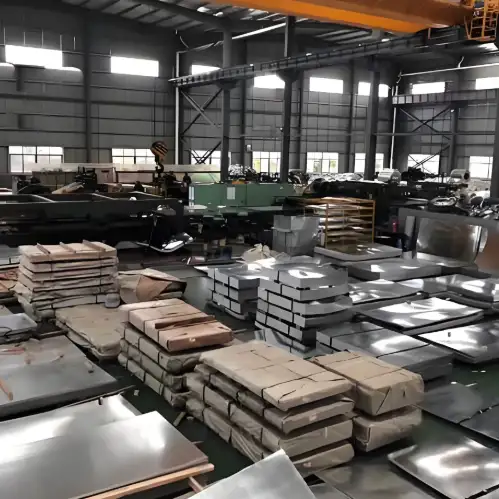
Comparison with related pressure-vessel steels
-
ASTM A516 (Grades 55–70): Higher toughness and strength range; often chosen for thicker vessels or lower-temperature service due to superior impact performance. A516 is more common where ASME code imposes impact testing requirements.
-
ASTM A299 / A283: These are structural or lower-regulated plates that sometimes overlap by chemistry but differ in permitted manufacturing practices and mechanicals. Always pick the grade that aligns with code requirements and required mechanical/toughness data.
2025 price comparison (United States / Europe / China)
Price reporting for commodity steel varies by form (HR coil, plate, cut-to-size), weight, delivery, and short-term market swings. The ranges below represent typical market landed mill prices during 2025 for plain carbon pressure-vessel grade plate; use them for budgetary estimation only. Always request current mill quotes and freight.
| Region | Typical 2025 price range (per tonne) | Unit / comment | |
|---|---|---|---|
| United States | USD $700 – $1,100 / tonne (plate range; depending on mill, thickness, and CWT quoting practices) | Converted from CWT industry quotes and plate supplier lists. | |
| Europe (EU) | EUR €650 – €1,050 / tonne (similar band; regional premiums apply) | European producers and traders track global scrap and HRC indices; regional logistics and energy influence final price. | |
| China (export / domestic) | USD $500 – $900 / tonne (domestic mills often cheaper; export quotes vary with duties and shipping) | Chinese supplier listings and marketplaces show competitive floor pricing; mill scale and MOQ impact real price. |
Caveats: these are indicative ranges in 2025; plate finished-goods, certified MTRs, surface processing, and small order quantities add premium. Always obtain firm mill offers with specified delivery and MTRs for contractual pricing. For exact tendering, MWAlloys will provide a factory quotation with live lead times and freight calculation.
Quality control, testing and code considerations
-
Mill test reports (MTRs): Always require MTRs showing heat analysis and mechanical tests. For pressure vessels, traceability from heat number to plate test results is standard.
-
Impact testing: Not required by A285 default; if code (e.g., ASME BPVC) requires Charpy testing for a given thickness/temperature, specify that explicitly.
-
NDE: Radiographic or ultrasonic testing may be specified for critical seams or for weld procedure qualification; these are outside basic A285 scope and must be ordered separately.
-
Code compliance: A285 plates are often used in welded vessels built to local codes; check code clauses that require particular grades, toughness levels, or PWHT. Where code and A285 diverge, follow the stricter requirement.
MWAlloys supply proposition
MWAlloys is a dedicated mill-linked supplier focused on industrial carbon and alloy plate for pressure-vessel and structural applications. For ASTM A285 plate we offer:
-
100% factory price: competitive mill-direct pricing because of long-term mill contracts and direct export channels.
-
Available stock: common thicknesses and grades held in ready stock for faster dispatch.
-
Fast delivery: prioritized packing and logistics for OEM schedules; we publish lead times upfront in quotations.
-
Quality assurance: full MTR, heat traceability, and option for third-party inspection.
-
Fabrication support: technical notes for welding practice, preheat recommendations, and CE assessment on request to simplify buyer evaluation. Contact MWAlloys for tailored quotations and technical datasheets.
Procurement checklist
-
State ASTM A285 and grade (A/B/C).
-
State thickness schedule and tolerances.
-
Require MTR with heat-and-product analysis.
-
Define any required mechanical tests beyond basic tensile.
-
Decide on edge/cutting, painting, or primer needs.
-
Lock in packing, export docs, and shipment term (FOB/CIF/DDP).
-
Specify acceptance inspection points and NDE if needed.
Frequently Asked Questions
1: Can A285 be used at subzero temperatures?
Not recommended without specifying Charpy impact testing. A285 basic spec does not guarantee low-temperature toughness; pick A516 or require impact testing if low-temperature fracture risk matters.
2: Is there a thickness limit?
The specification commonly limits plate to about 50 mm (2 in.) for internal soundness reasons; check the latest standard wording and mill capabilities.
3: Which grade is easiest to weld?
Grade A (lowest carbon) typically gives the greatest weldability margin; Grade C may need more preheat and attention to hydrogen control.
4: How does A285 compare with A516?
A516 gives higher toughness and is preferred for lower-temperature service or where code requires impact testing; A285 is a cost-efficient choice for general welded pressure devices with moderate requirements.
5: Are mill certificates standard?
Yes. Mill Test Reports (EN 10204/3.1 or equivalent) showing composition and mechanical tests are standard procurement requirements.
6: Can A285 be normalized or heat-treated?
A285 plates are normally supplied as-rolled. Buyers may request normalization or PWHT where code or service requires it, but this must be specified and priced.
7: What consumables are recommended for welding?
Use low-hydrogen consumables that match or slightly under-match base metal strength; follow qualified welding procedures and control interpass temperatures per CE calculation.
8: Is ultrasonic testing required?
Not by A285 itself. For critical vessels or where fabrication codes demand it, specify NDT in the purchase order.
9: What influences price most?
Scrap/commodity indices, mill capacity, energy costs, freight, certification needs, and order quantity. Tight lead times and small orders add premiums.
10: Can MWAlloys aid with documentation for ASME code submissions?
Yes. MWAlloys supplies MTRs, mill traceability, and technical notes to assist in code compliance and fabrication planning.
Closing technical guidance
When engineering with A285 plate, treat it as a cost-efficient option for welded vessels that do not demand high fracture toughness at low temperature. Always tie plate selection to code requirements (ASME or local), welding qualifications, and required testing. For procurement, insist on mill certificates and make sure the grade chosen aligns with fabrication needs. MWAlloys can supply certificate-backed plate at factory pricing and assist with technical clarifications for fabrication teams.
Authoritative references
- ASTM A285 — Standard Specification for Pressure Vessel Plates, Carbon Steel, Low- and Intermediate-Tensile Strength.
- MatWeb — Material data for ASTM A285 grades (chemical and mechanical property summaries).
- MakeItFrom — Typical mechanical property summary for ASTM A285 Grade A/B/C.
- ASME Digital Collection — Experimental studies on fracture behaviour of ASTM A285 Grade C (technical paper).

